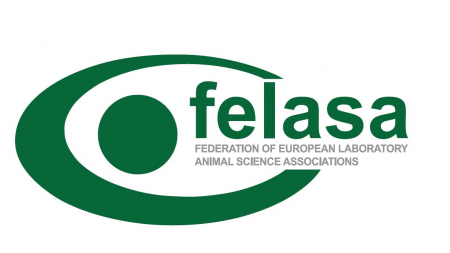Skills to be achieved during the FELASA courses

1. Formulation, critical appraisal of license application for animal experiments -according to the Hungarian legislation as requested by the National Scientific Ethical Committee on Animal Experimentation (ATET)
2. Animal handling
2.1. Removing animals from the cage
2.2. Sex recognition
2.3. Restraining of the animals
3. Applying aseptic techniques (on phantoms)
3.1. Surgical hand wash
3.2. Taking on sterile gown
3.3. Taking on sterile gloves - assisted and self-assisted method
4. Knot tying techniques (on phantoms)
4.1. Square (sailor's) knot
4.2. Surgeon's knot
4.3. Viennese knot
4.4. Knot tying with instrument
5. Suture techniques (on phantoms)
5.1. Handling of surgical instruments (scalpel, needle holder, scissors, etc.)
5.2. Simple interrupted suture
5.3. Simple continuous suture
5.4. Vertical mattress (Donati) suture
6. Wound management
6.1. Suture removal (on phantom)
6.2. Basic management of wounds (on phantom)
7. Application of covering bandageWays of drug administration and blood sampling
7.1. Intracutaneous injection (on training phantom)
7.2. Subcutaneous injection (on training phantom)
7.3. Intravenous injection (on training phantom)
7.4. Intramuscular injection (on training phantom)
7.5. Gavage of rats
7.6. Taking blood sample for blood gas analysis from arterial cannule
8. Infusion (on training phantoms)
8.1. Setting up an infusion set
8.2. Introduction of butterfly needle or Braunule cannula
8.3. Use of infusion pump
9. Analgesia and anaesthesia of rats
9.1. Calculation of the appropriate dose of different anaesthetics and analgesics
9.2. General anaesthesia: intraperitoneal injection
9.3. Local anaesthesia: infiltration technique
10. Surgical interventions on anesthetised rats
10.1. Securing airways by tracheostomy
10.2. Surgical cannulation of the jugular vein
10.3. Surgical cannulation of the carotid artery
Monitoring methods
- Attendance documents - signed by the participants
- Submission of a completed animal experiment license application to the course leader - condition of the final practical exam (!)
- Evaluation and discussion of the animal experiment license applications.
- Written test about and/or practical demonstrations of the subject of the earlier practice.
- Opinion polls filled by the participants - numeric and textual evaluation of the course
Assessment
- Completed animal experiment license application according to the suggestions of the course leader, based on the evaluation of the practicing version. Completion is mandatory for a successful exam.
- The written exam at the end of the course includes questions concerning the knowledge of the participants about the acquired practical skills.
- Practical exam: 1 obligatory and 4 elective OSCE tasks
3.1. Obligatory task:
- Handling animals, sex recognition
- Giving subcutaneous, intramuscular and intravenous injections (on training phantom)
Email: office.expsur@med.u-szeged.hu
Head of Department: Andrea Szabó MD PhD



